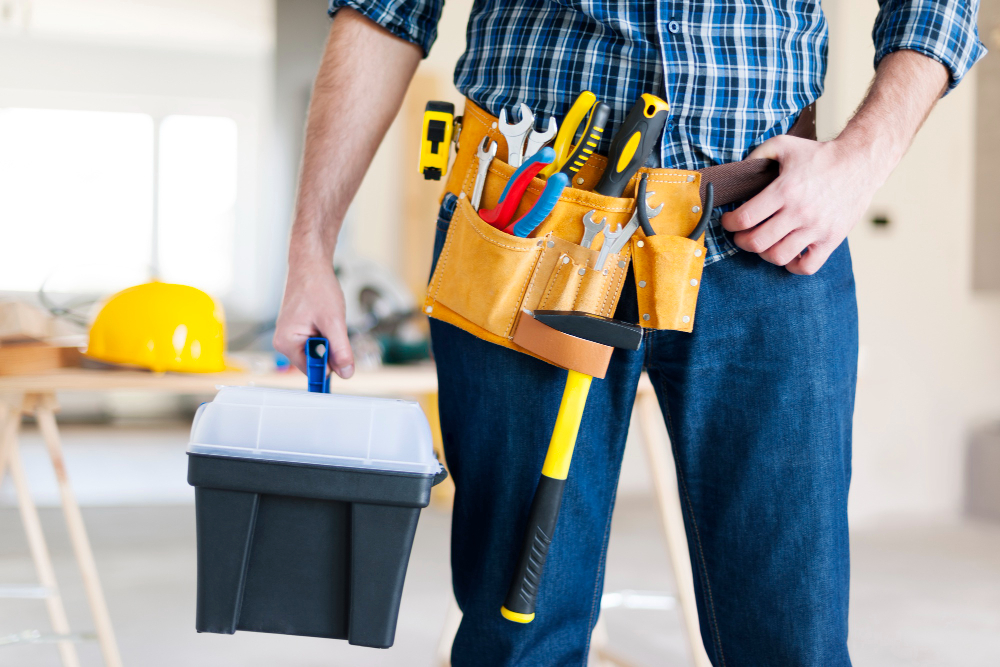Last updated on
Have you ever had a tenant contact you late at night to report a leaky roof after a storm? Or, in the dead of winter, a warning about a broken heating system?
These situations are not merely annoying for individuals in property management; they necessitate quick and efficient actions to protect the property and the renters or yourself. This is a blog that focuses on efficiency and residents’ happiness when handling emergency maintenance.
What is Emergency Maintenance?

Emergency maintenance includes necessary fixes that put a property’s structural integrity, health, or safety in jeopardy. These problems might include anything from serious structural damage and security breaches to plumbing and electrical malfunctions. Whether dealing with a traditional property or an eco-friendly house, the main goal is to address these issues as soon as possible to prevent damage and guarantee the comfort and safety of the residents.
Identifying and Prioritizing Emergencies

Appropriately identifying and prioritizing concerns is essential to managing emergency repair for any building and property type, from rigid steel buildings to usual apartments. Here are common examples of emergencies that can happen:
- Water Leaks: Whether it comes from a large-scale roof leak or a broken pipe, water damage may spread quickly and cause mold growth and structural damage.
- Electrical Hazards: Power outages, exposed cables, and defective circuit breakers can all lead to electrical shocks and fire concerns.
- Heating or Cooling Failures: A malfunctioning HVAC system can cause severe pain or even pose a health risk, especially during Canada’s bitterly cold winters or intense summer heat.
- Gas Leaks: The possibility of an explosion or poisoning makes any suspected gas leak extremely serious.
Strategies for Effective Emergency Maintenance in Property Management
1. Preparation is Key
The difference between a well-managed emergency and a chaotic one can be found in preparation.
- Emergency Response Plan: Create a thorough plan that outlines the necessary steps to take right away, such as turning off the utilities and calling emergency services.
- Reliable Contacts: Keep a list of reliable contractors on hand for different kinds of repairs, and make sure they are reachable at all times. If your first choice isn’t accessible, having multiple contacts for each type of repair can come in rather handy.
- Tenant Communication: Provide tenants with a 24/7 emergency contact number and clear guidelines on what constitutes an emergency and how to report it.
Case in Point: Think about a neighbourhood where there was a significant water leak. With a thorough emergency response plan in place, the property management team immediately cut off the water supply, called a plumber, and alerted the residents. Their readiness made for a quick settlement that reduced harm and discomfort to the tenants.
2. Effective Communication
Keeping tenants informed during an emergency is crucial for maintaining trust and ensuring their safety.
- Immediate Updates: Notify tenants of the situation, the steps being taken, and any actions they should follow.
- Follow-Up: After repairs, check in with tenants to confirm the issue has been resolved to their satisfaction. This proactive approach demonstrates care and helps identify any lingering issues.
Example: The property management swiftly notified tenants via text and email, provided temporary heaters, and projected repair timelines when a heating system failed during a cold snap. This strategy supported good tenant relations while also assisting in preserving renter comfort.
3. Quick and Efficient Response
A rapid response is essential to managing emergencies effectively.
- Assessment and Action: As soon as an emergency is reported, assess the situation, determine the most effective course of action, and deploy the necessary resources.
- Professional Intervention: Engage skilled professionals immediately. For instance, when a residential building experienced a blackout, a quick dispatch of an electrician led to a prompt resolution and restored power within hours.
4. Incorporating Technology
Leveraging technology can enhance emergency maintenance processes.
- Property Management Software: Utilize software to track repairs, manage tenant communications, and monitor maintenance status in real-time. Mobile apps that allow tenants to report issues directly can streamline the notification process and improve response times.
- Data-Driven Decisions: Use data from property management platforms to analyze past emergencies and refine your maintenance strategies.
Example: By utilizing a mobile app for emergency reporting, a property management business was able to enhance reaction times and communication, which sped up issue resolution and increased tenant satisfaction.
DIY vs. Professional Help
Even though a lot of homeowners might have access to resources for do-it-yourself repairs, it’s important to distinguish which jobs are doable and which call for expert assistance.
DIY Tasks:
- Clogged Drains: Using a plunger or a plumber’s snake, simple obstructions are frequently unclogged. It may work to remove the sink trap for more tenacious blockages.
- Resetting Circuit Breakers: Generally, a tripped breaker can be reset simply by turning it off and back on.
- Replacing HVAC Filters: Changing filters regularly is an easy way to enhance system performance and air quality.
Professional Tasks:
- Gas Leaks: The area should be evacuated and any suspected gas leak should be reported right away to the gas company’s emergency line.
- Major Water Leaks: Major leaks need to be professionally fixed to avoid structural damage, especially if they are inside walls or foundations.
- Electrical Issues: A certified electrician should solve problems like flickering lights or frequent tripping that go beyond just resetting breakers.
- HVAC Failures: To ensure safe and effective operation, complex HVAC systems frequently need professional servicing.
Preventive Maintenance for Emergencies
Property systems can have a longer lifespan and a lower chance of emergencies thanks to preventive maintenance.
- Regular Inspections: Make routine inspections of HVAC, electrical, and plumbing systems to identify problems before they become emergencies.
- Seasonal Maintenance: Perform seasonal tasks like cleaning gutters, checking roof integrity, and servicing heating and cooling systems.
Insurance and Warranties
Comprehending your insurance policy and maintaining track of system warranties will offer financial security and streamline the repair procedure.
- Homeowners’ Insurance: To find out what is covered for emergency repairs, review your policy.
- Warranties: Maintain track of any warranties for large systems, such as HVAC and plumbing, as these frequently cover replacement or repair expenses.
A comprehensive plan, quick thinking, unambiguous communication, and the application of contemporary technologies are all necessary for efficient emergency maintenance management. Property managers may ensure tenant safety and satisfaction while protecting their buildings by using these measures, which will enable them to handle emergencies more skillfully. Being well-prepared is essential to reducing the effects of emergencies and preserving smooth operations in the volatile world of property management.
Table of Contents




